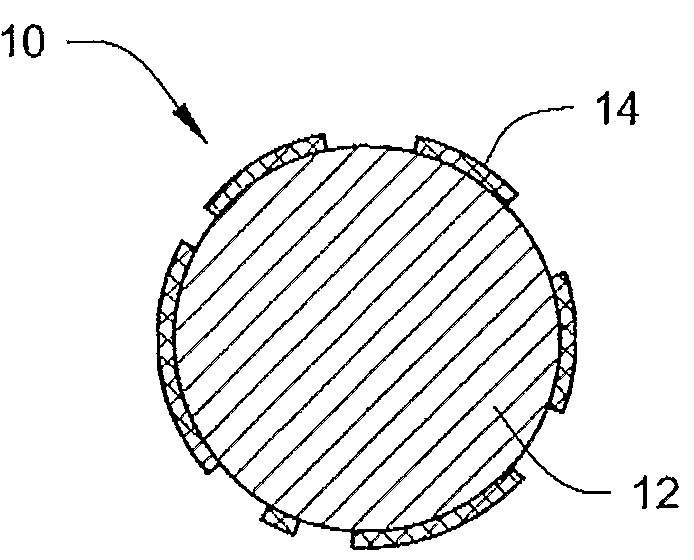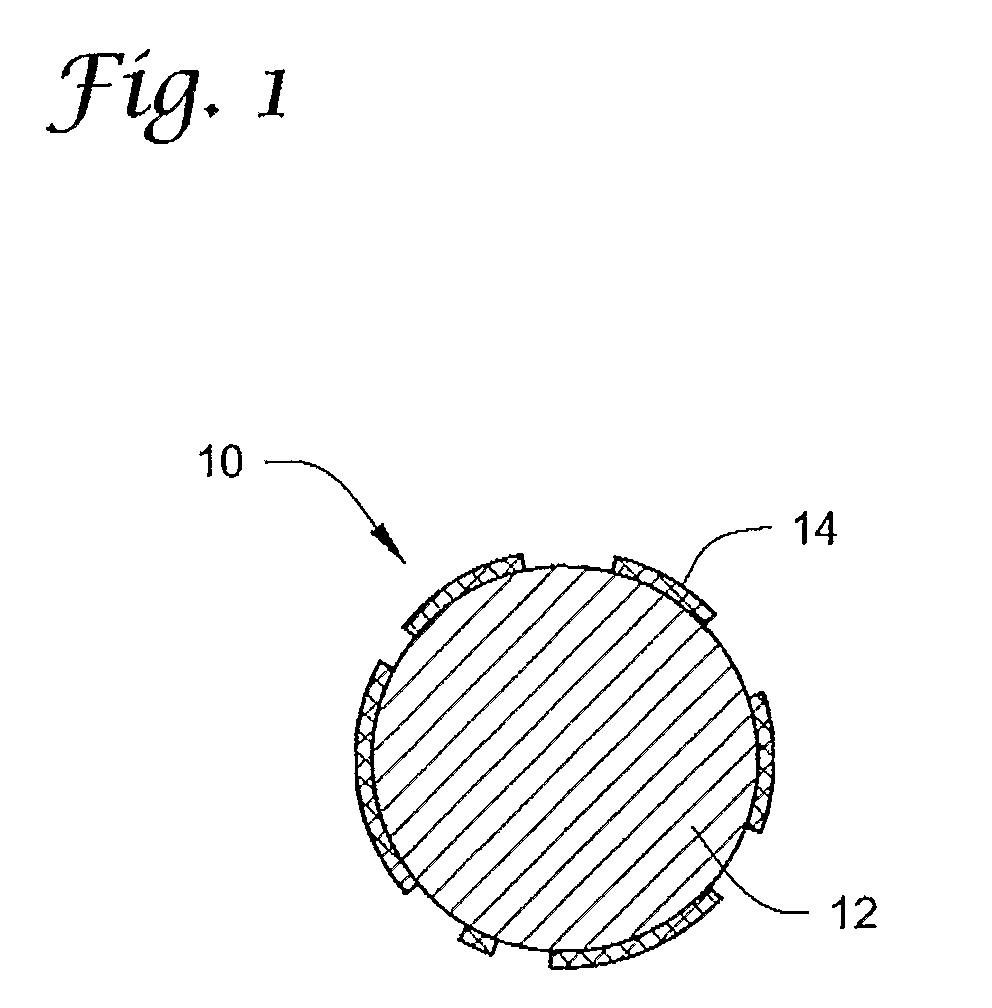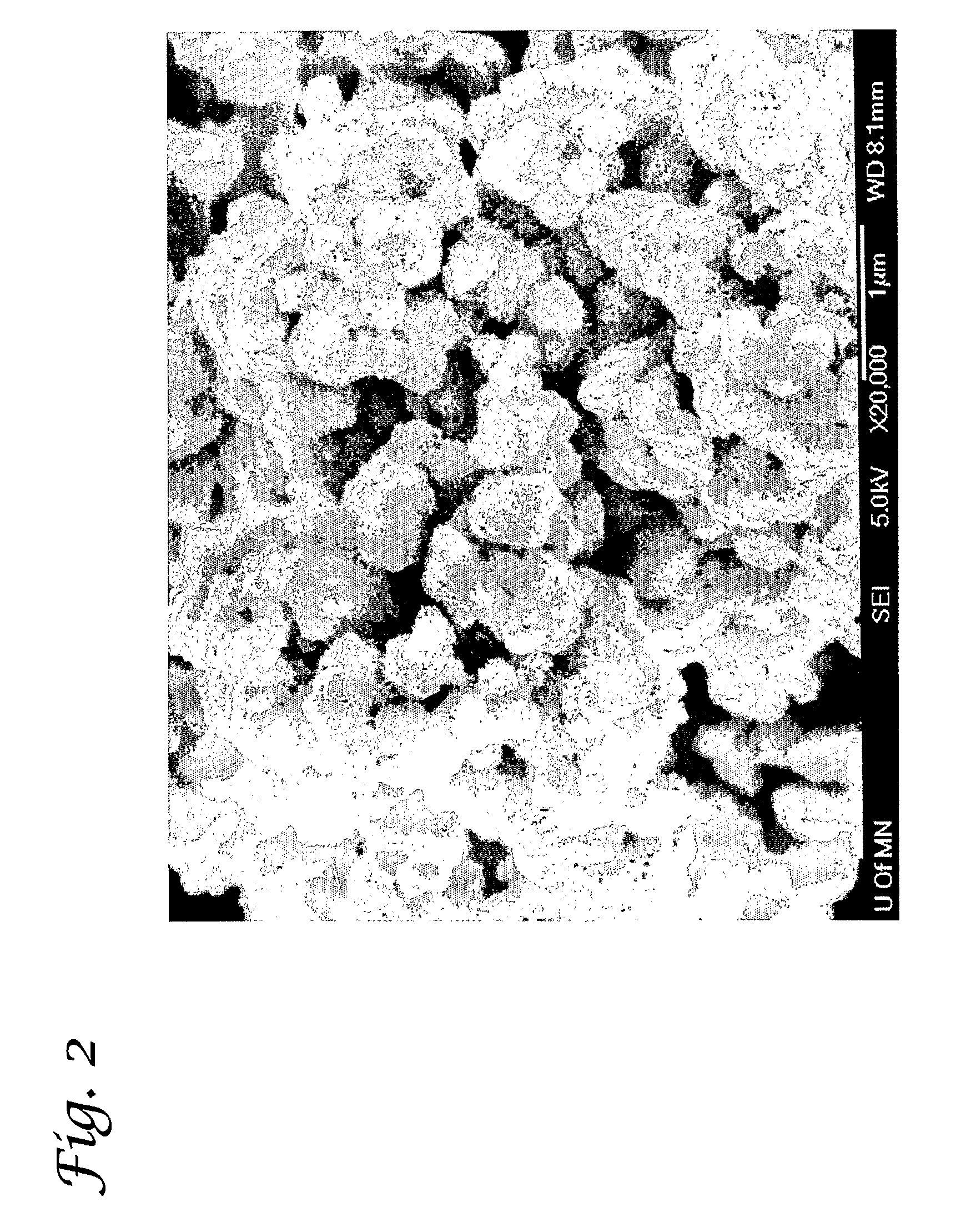Air Pollutant Removal Using Magnetic Sorbent Particles
- Summary
- Abstract
- Description
- Claims
- Application Information
AI Technical Summary
Benefits of technology
Problems solved by technology
Method used
Image
Examples
example 1
Preparation of Magnetic Manganiferous Particles from Cuyuna Iron Ore
[0212]Adsorbent magnetic particles can be prepared by oxidation of manganiferous iron ores to convert them from a weakly magnetic form to a relatively strong magnetic form. Manganiferious iron ores obtained from the Cuyuna iron range region are relatively non-magnetic because they consist mainly of limonite (Fe2O3.nH2O), iron carbonate, manganite (Mn2O3.H2O), and often pyrolusite (MnO2). Cuyuna iron ore was ground to −48 mesh and subjected to magnetized roasting at 700° C. in an atmosphere of 50% N2, 42.5% CO2 and 7.5% CO. Roasting under these conditions converts the iron oxides and carbonates into magnetite (Fe3O4) and reduces the various manganese oxides to MnO. The manganiferous particles were then selectively oxidized by passing them through a stream of O2 passed through an ionizer, converting the MnO to MnO2, resulting in particles formed primarily of an agglomerate of magnetite and manganese dioxide. Particles...
example 2
Preparation of Layered Adsorbent Magnetic Particles with a Magnetite Core
[0213]One way of preparing adsorbent magnetic particles involves precipitating metal oxide materials or mixtures of metal oxide materials onto magnetic core particles. Precipitating oxides that may be used in this process include MnO2, TiO2, CuO, CO3O4, NiO2, and Al2O3. Magnetite core particles ground (−325 mesh or 44 μm diameter magnetite) are placed in solution with manganese sulfate or manganese chloride that has been rendered acidic through use of nitric acid to pH 1-4, and the solution is gently stirred. An oxidizing chemical such as hydrogen peroxide, ozone, or potassium permanganate is then added to drive an oxidation reaction, with oxidant added until the oxidation reaction is complete. The formed adsorbent magnetic particles are then allowed to stand without mixing for 24 hours, after which the adsorbent magnetic particles are recovered by filtration. The adsorbent magnetic particles are typically drie...
example 3
Preparation of Layered Adsorbent Magnetic Particles Using a Binder
[0214]Magnetic Manganese Dioxide was produced by combining dry finely ground (−325 Mesh or 44 micron) magnetite from a Taconite Mining operation in NE Minnesota with dry fine (2 micron) electrolytic manganese dioxide, (EMD) using phosphoric acid as a binder. Specifically, dry magnetite concentrate is mixed with dry electrolytic manganese dioxide in a high speed mixer, with 50% strength phosphoric acid being sprayed in a fine mist into the dry mixing material. The addition of the phosphoric acid causes an exothermic binding reaction to occur and a fine micro-balled sorbent is produced in the process. Scanning electron microscope (SEM) photos of the particles reveals a high surface area component attributed to the high surface area of the EMD bound to the magnetite particles, as shown in FIG. 2.
PUM
| Property | Measurement | Unit |
|---|---|---|
| Diameter | aaaaa | aaaaa |
| Diameter | aaaaa | aaaaa |
| Diameter | aaaaa | aaaaa |
Abstract
Description
Claims
Application Information
 Login to View More
Login to View More - R&D
- Intellectual Property
- Life Sciences
- Materials
- Tech Scout
- Unparalleled Data Quality
- Higher Quality Content
- 60% Fewer Hallucinations
Browse by: Latest US Patents, China's latest patents, Technical Efficacy Thesaurus, Application Domain, Technology Topic, Popular Technical Reports.
© 2025 PatSnap. All rights reserved.Legal|Privacy policy|Modern Slavery Act Transparency Statement|Sitemap|About US| Contact US: help@patsnap.com



